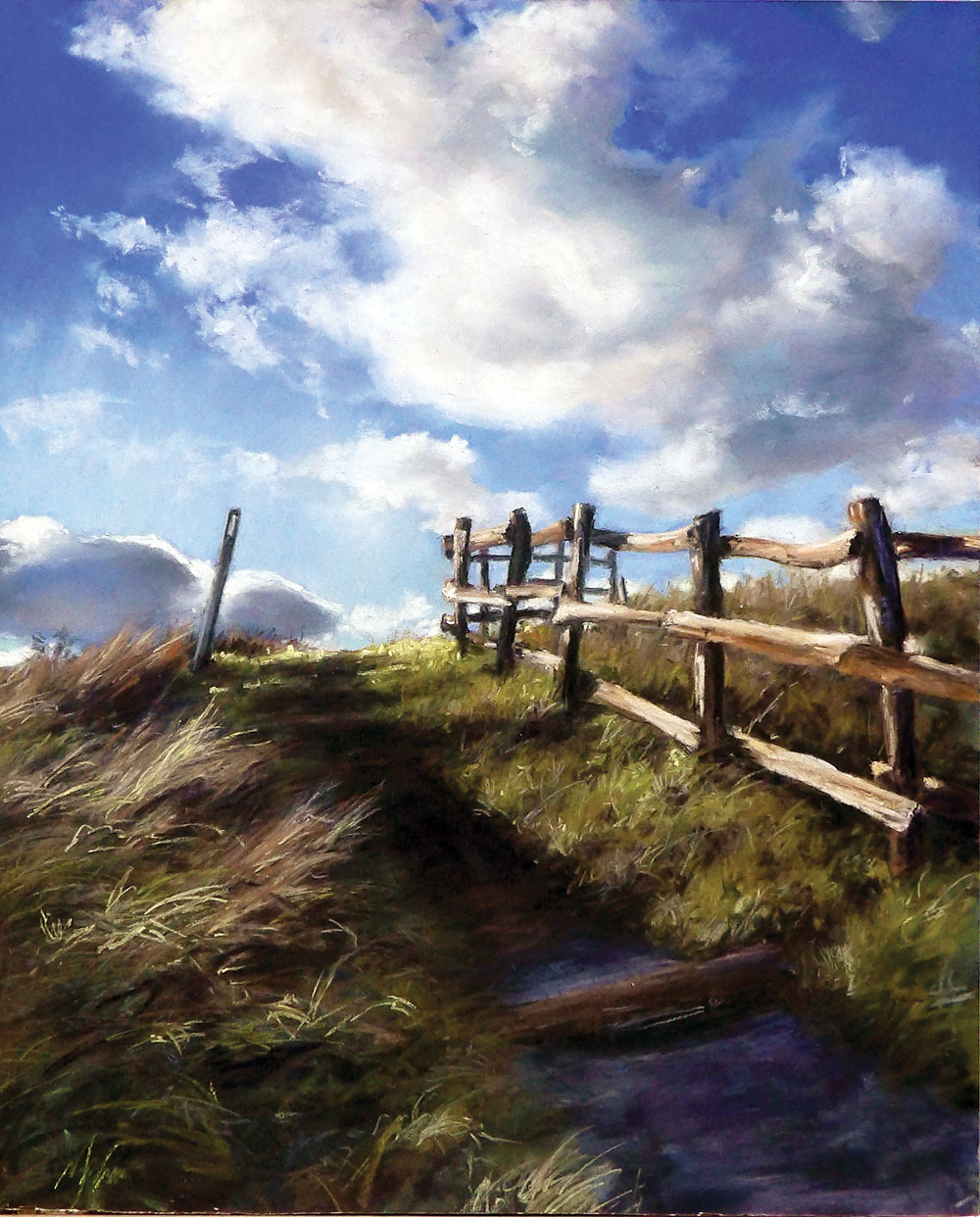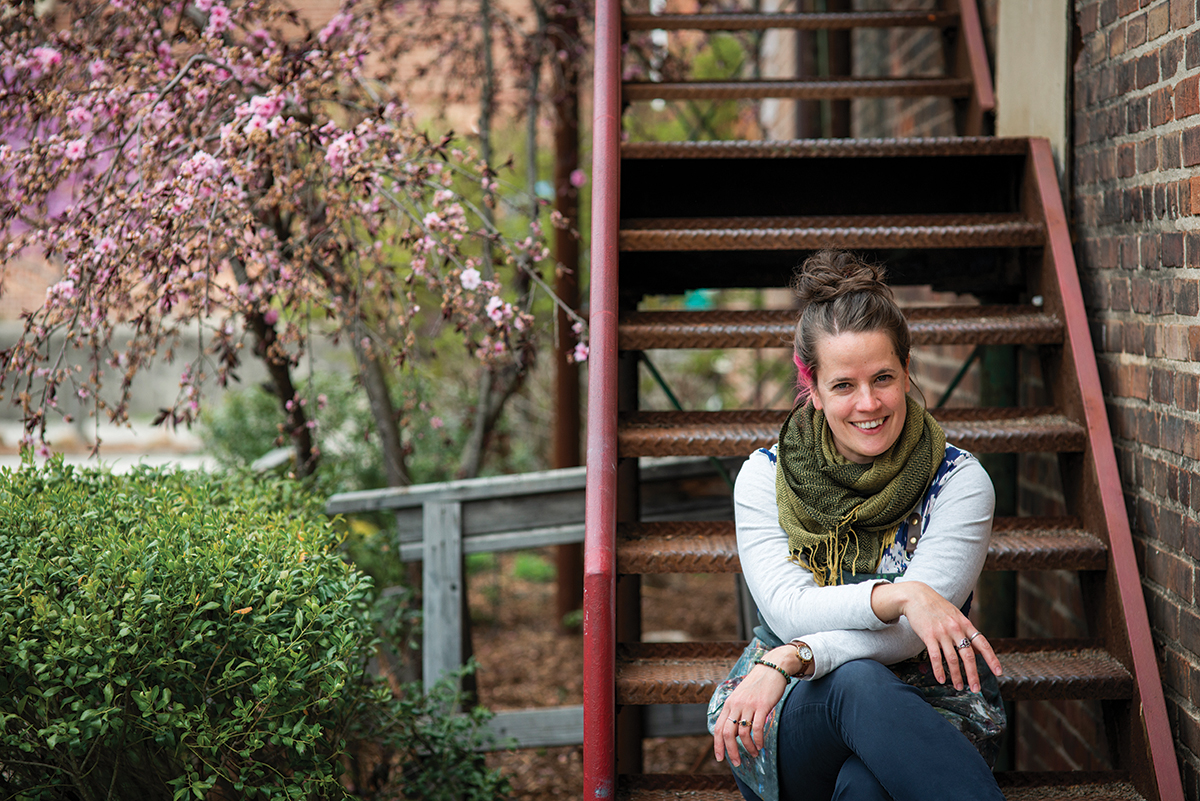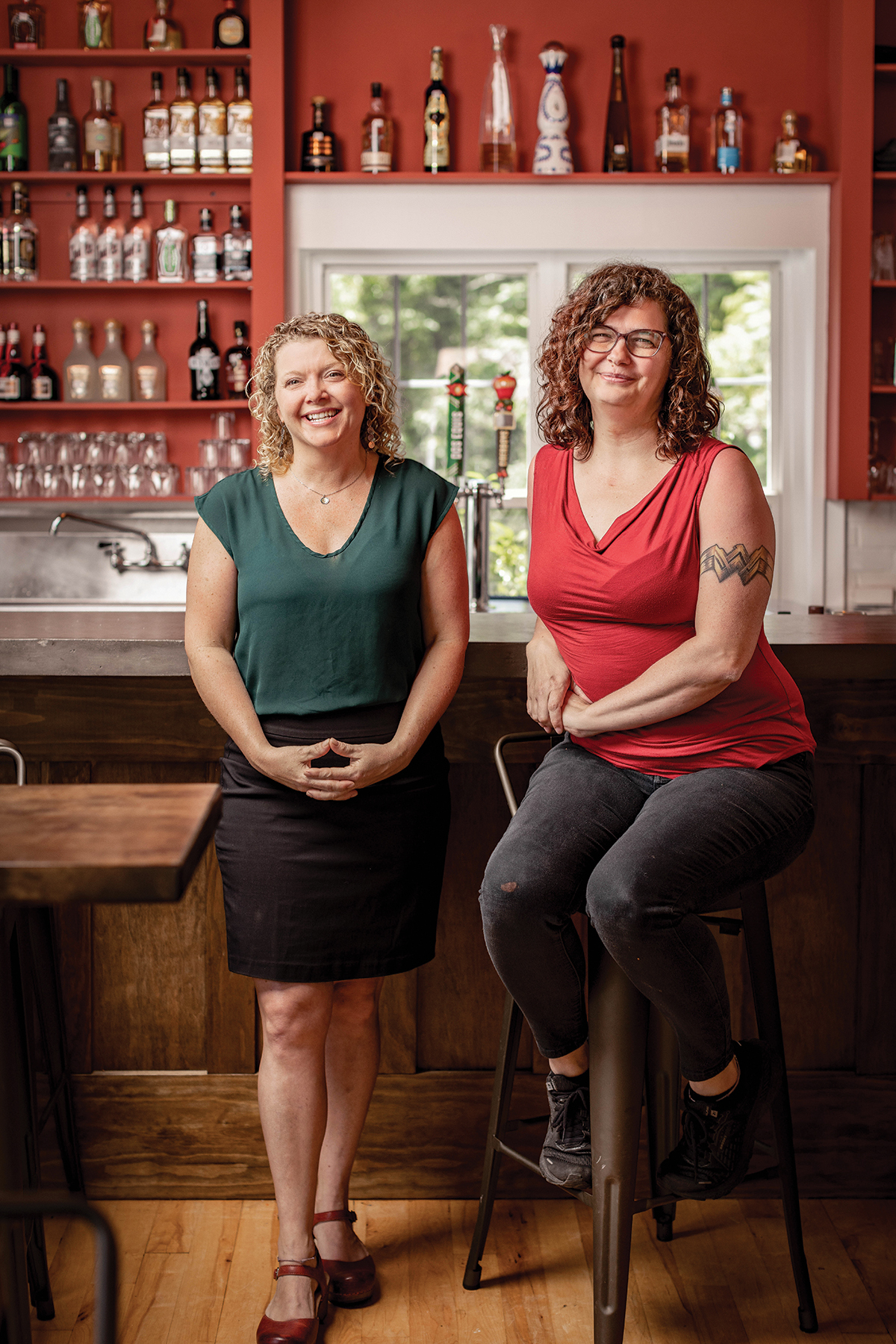Saluda’s unique railroad history is recounted by those who lived it

Portrait by Amos Moses
Garland Goodwin remembers many personal details about trains, back when boarding one was as much a part of everyone’s life as climbing into an Uber ride is today. In fact, Goodwin remembers a lot about a lot of things: He’s celebrating his 91st birthday this year and has had ties to Polk County since he was six years old.
“I rode in Pullman cars and day coaches in the ’30s and ’40s,” Goodwin recalls, “and I remember when Dad brought me up to Melrose Junction on the Saluda Grade many times to see the helper engine there.” Goodwin will share these and many more anecdotes of past days at this month’s “Saluda Train Tales” event at the Saluda Historic Depot, part of an ongoing series.

“The railroad depot was a very important place then,” Goodwin points out. “The trains carried mail as well as people and freight.”
The present Depot, which dates from the 1920s, replaced Saluda’s first train station, built in 1903 to service the hundreds of summer visitors who escaped the heat of lower elevations by climbing aboard trains that huffed their way up Melrose Mountain, along what is still the steepest stretch of standard-gauge track in the country. The helper engines Goodwin remembers seeing at Melrose Junction were the workhorses of the Saluda Grade, providing added power to nudge passengers and freight up the steepest portion of the Grade to Saluda.
“I watched a Southern Railway crew change a tire on a locomotive in Tryon,” Goodwin says, referring to Saluda’s neighboring town at the foot of Melrose Mountain, an important rest stop for travelers and train crews before continuing the upward journey to Saluda, Hendersonville, and on to Asheville.
When automobiles became more economically feasible for more families, and with I-26 carrying traffic up and over the mountain, passenger service decreased; although some special passenger trains continued, the last regular train that ran up the Saluda Grade was the Carolina Special, circa 1968, carrying visitors from Charleston. Freight traffic ceased in 2001.
“The closing of the Saluda Grade certainly brought changes to Saluda,” Goodwin says, “but the town is [still] growing.” He mentions the “vitality of the businesses” on and near Main Street. These include art galleries, a shop for the burgeoning population of mountain-bike enthusiasts, and new restaurants.
But Goodwin opts to lunch at an old standby when he visits. “I always eat at Ward’s Grill,” he says. Ward’s has been around almost as long as Thompson’s Store next door, which bills itself as North Carolina’s oldest continuously operating grocery store.

Photo by Amos Moses
Saluda’s history has been assiduously documented by not only the Saluda Historic Depot’s efforts but by the Saluda Historic District, which successfully placed the town’s entire Main Street on the National Register of Historic Places.
Goodwin’s own history with Polk County is nearly as venerable as Saluda’s. As a boy of ten, he worked for Seth Vining, the founder and publisher of The Tryon Daily Bulletin, still being published as the country’s “smallest daily newspaper” despite changes in ownership since Vining’s day. Although the Air Force and Goodwin’s subsequent career as an aeronautic engineer took him away from Tryon during much of the middle of the last century, he visited often for long stretches, even returning to the Bulletin for a year as Vining’s assistant editor. Finally settling on his retirement in Columbus in the late 1980s, Goodwin’s been a familiar presence to Bulletin readers through a series of reminiscing columns starting with “A Boy in the Amen Corner,” collected and published as a book by the same name, and followed by “Fat Fenders and Reflections”, “Prime Time”, and “Still More Remembering”, with another collection on the way.

Photo by Amos Moses
“I suppose I liked the 1960s as a good time, because I was in my own house and starting a family and enjoying my work in engineering,” Goodwin says. But his years growing up during tremendous changes in American social and cultural history surely count as a valuable resource for preserving our mutual heritage. “Remembering How It Was” is the title of Goodwin’s forthcoming book, a reminder that cherishing where we’ve been enriches where we’re going.
Garland Goodwin will be the guest speaker at this month’s “Saluda Train Tales” at the Saluda Historic Depot (32 West Main St.) on Friday, March 20, 7-8pm. Free. For more information, visit saludahistoricdepot.com.



